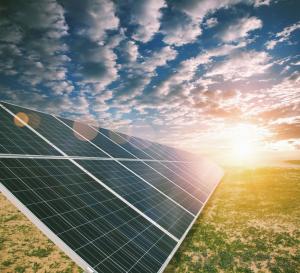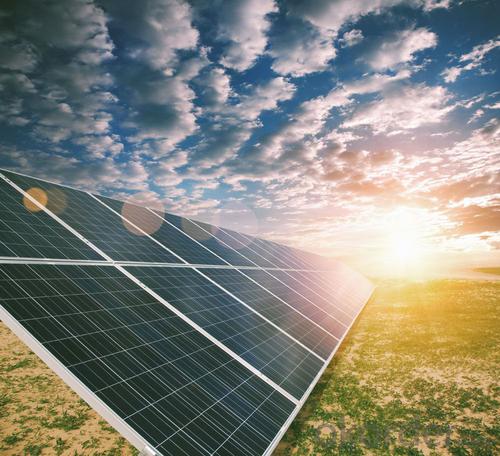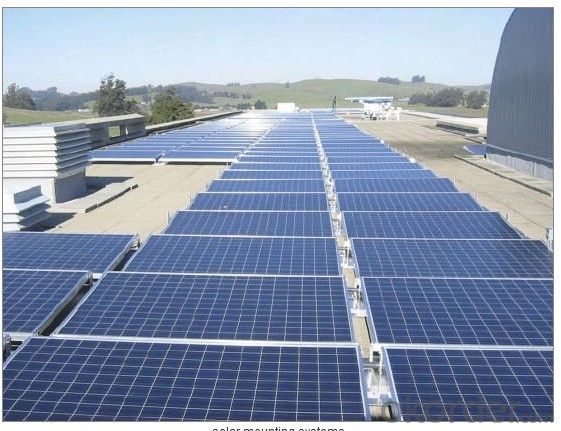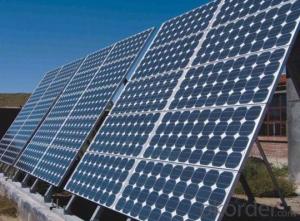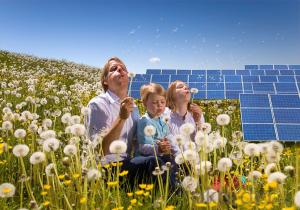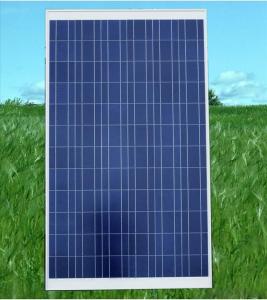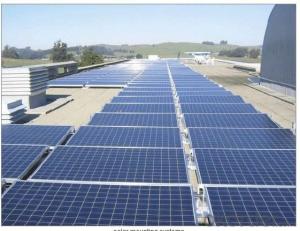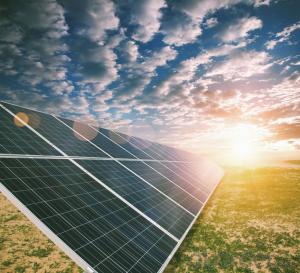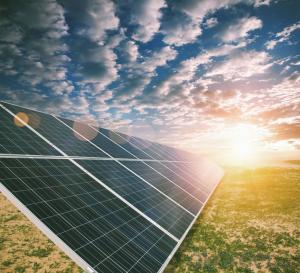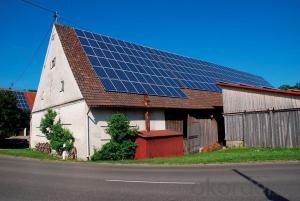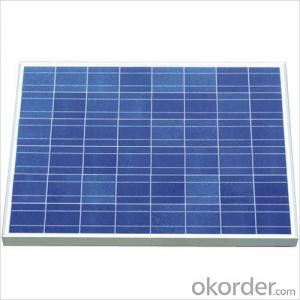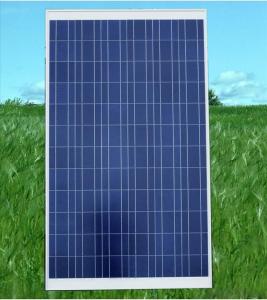Grid Tie Polycrystalline 295W Silicon Solar Panel
- Loading Port:
- Nanjing
- Payment Terms:
- TT OR LC
- Min Order Qty:
- 200000 watt
- Supply Capability:
- 20000000 watt/month
OKorder Service Pledge
OKorder Financial Service
You Might Also Like
INTRODUCTION
We are a high-tech group wich specializes in solar products design,research, manufacture, sales,solar projects design and installation.
Our national sales service covers seven parts, including northeast, north, east, middle, south, northwest and southwest, international sales covers five continents and over forty countries, including Germany, Italy, Spain, France, America and Brazil etc.
This installation Manual contains essential information for the electrical and mechanical installation that your must know before installing CUSTOMER PV modules. This also contains safety information you need to be familiar with .All the information described in this manual are the intellectual property of CNBM and based on the technologies and experiences that have been acquired and accumulated in the long history of CUSTOMER. This document does not constitute a warranty, expressed or implied.
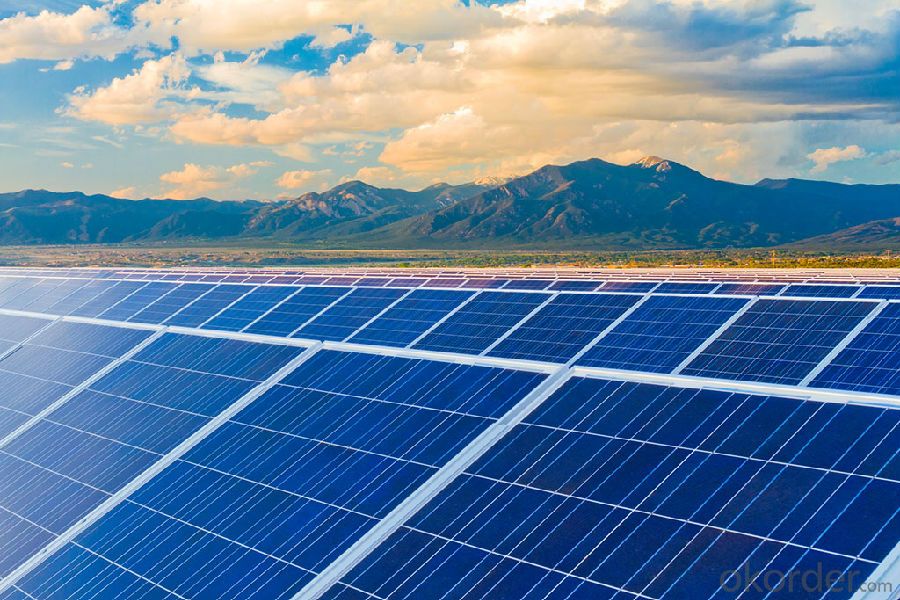
GENERAL INFORMATION
The installation of PV modules requires a great degree of skill and should only be performed by a qualified licensed professional, including licensed contractors and licensed electricians. Please be aware that there is a serious risk of various types of injury occurring during the installation including the risk of electric shock. All CUSTOMER modules are equipped with a permanently attached junction terminal box that will accept variety of wiring applications or with a special cable assembly for ease of installation, and they do not require assembly.
DATA SHEET
Maximum Power | 295W |
Efficiency | 0.152 |
Backsheet | White |
Frame Colar | Silver |
Manufacture Site | China |
Frame | Anodized Aluminum Alloy |
Weight | 27 kg |
FAQ:
1. How long will my inquiry get response?
Your inquiry related to our products or prices will be replied within 24 hours.
2. Can I get professional service and suggestion?
Well-trained and experienced staffs to answer all your questions in fluent English.
3. Do you accept OEM or customized design?
OEM & ODM, any your customized lightings we can help you to design and put into product.
4. What if I need specific design?
Distributorship are offered for your unique design and some our current models.
- Q: I had an idea for new parabolic solar panels shaped like horseshoes. They can install them outside buildings facing the equator. They could angle them from the ground based on how many degrees latitude the location and rotate them according to seasonal changes. The disadvantage of photovoltaic panels is that they are not all capable of receiving direct sunlight. That is the quintessential reason I believe horseshoe solar panels are more effective than flat rectangular ones. One side could function in the morning; the middle could perform at midday; and the other could operate during the evening. That method seems more sensible than hourly positioning. I'm certain horseshoe panels could save and produce more electricity. A football stadium, shopping mall, or outlet center would be a fantastic place. What do you think?
- Sorry to be a prophet of doom again but the fault in the system is that only a small portion of the cell is used at any time of the day, given the high cost of solar panels this is not financially viable. Why not just have a small motor to turn the panel to face the sun, that's been done and it works.
- Q: who has solar panels on their home and are they worth it
- There are different kinds of solar panels. The biggest division is between photovoltaic panels that produce electricity and thermal solar panels that produce heat for hot water and space heating. Commercial photovoltaic panels are from 8 to 24% efficient while solar thermal panels are from 60 to 80% efficient. Solar thermal panels especially for hot water have a much higher ROI (return on investment) than photovoltaic panels. A solar hot water system may have a payback period (when savings equal the investment) as short as 3 to 5 years while photovoltaic panels will typically have a payback period between 7 and 5 years. Solar panels especially in times of low interest rates may be a very worthwhile investment with a better return than you can find almost anywhere else. But they are also highly dependent upon your situation. Owning a home with a good southern exposure is a prerequisite.
- Q: I'm looking at solar panels and I have NO IDEA what this stuff means.They come in catagories of Watts. What does that refer to? If a solar pannel is in the 200-watt catagory, what does that really mean? Will it produce 200 watts an hour, a day, a week, a month, a year?? How many watts of energy does the average house use up in one month? I really wish they would just tell me on the website!! :(0 points!!!!!!!! :D
- Ok, seeing your icon is a female, I'll take a chance and offer a possible conversion factor. In diets, you count calories. When you exercise, you burn calories per minute or hour. In one exercise session you burn a total number of calories. And remember, 000 calories = kilo-calorie = food calorie. Same with solar panels and electrical power (same stuff, different units). Solar panels come in many watts sizes, like different foods and portions have different calories produced. When these panels are exposed to sunlight, they will generate this amount of watts for as long as you expose them (the units are kilo-Watt-hours), basically, like burning calories on a bike for an hour burns a total of x calories for that hour. If you have a 2-hour day, then a 00 watt panel will generate a possible total of 2 hours x 00 watts = 200 watt-hours = .2 kilowatt-hours. Just like calories burned during regular exercise varies over the year and your mood, the solar panels will generate varying level of power (watts) depending on the weather. And just like you burn calories at different rates by age and lifestyle, an average house power use is dependent on geographic location, size of house, number of occupants, etc. No real typical profile. I would recommend you get some personalized help in sorting out your power needs, A contractor/installer can give you a quote/estimate or general class of use. A second or third quote would keep you first estimate honest. Good luck!
- Q: Rated in kilowatts, what is the maximum output of one 8 by 0 solar panel? Assume this solar panel is located at the equator for maximum sunlight.
- 8 by 0 what? inches, feet, meters??
- Q: Can solar panels be installed on parking lots or garages?
- Yes, solar panels can definitely be installed on parking lots or garages. In fact, these areas are often ideal for solar panel installations due to their large, open spaces and exposure to sunlight. Installing solar panels on parking lots or garages not only helps generate clean energy, but also provides shade and protection for vehicles, making it a practical and sustainable solution.
- Q: What are the maintenance requirements for solar panels?
- The maintenance requirements for solar panels typically include regular cleaning to remove dirt and debris, checking for any damage or wear, ensuring proper electrical connections, and monitoring the performance of the panels. Additionally, it may be necessary to trim nearby trees or vegetation that could block sunlight and reduce the efficiency of the panels. Overall, proper maintenance helps to maximize the lifespan and efficiency of solar panels.
- Q: So you know how the bigger the surface area exposed to the heat radiation means the quicker it'll heat up.Is this what happens with solar panels, they have a large surface area exposing to the sun, so they can get more heat?
- Solar panels do heat up. But that's because the radiant energy from the Sun that lies within the infrared (IR) band of energy causes the material in the panels to heat up. And that's the same for any body that has the Sun shine on it. Your face, for example, will heat up while you get a nice tan on the beach. That's due to the heat producing IR radiant energy. Now if those solar panels are supposed to heat buildings etc., that heat produced in the panels when the IR strikes them will be transferred, usually by some fluid, to floors of the rooms to be heated. And as the amount of heat generated by the Sun is proportional to the area of the solar panels, bigger areas of panel will generate more heat than smaller areas. Photoelectric solar panels are another kind. Here the interest is in the visible band of radiant energy from the Sun. Heat, from IR, is still there, but it is not the product sought by PE solar panels. The visible light photons knock off loosely bound electrons from the photoelectric material (typically silicon based) and those electrons are siphoned off as current. That's where the electrical power comes from for buildings using PE solar panels to provide their own electricity.
- Q: I'm wondering if the cost of the panels and equipment have come down enough to make them viable in areas like Seattle or Vancuver for example.
- The key is the average insolation value for the location. This is a number that represents the effective numbers of sunlight available per day. The insolation for Seattle varies from 2.9 and 3.57, depending on who is reporting the number. The insolation where I live, near San Francisco is 5. For me, solar is paying off.
- Q: How can I calculate the amount of watts needed for a solar panel to power a water and air pump in gal/hr and a 600 watt LED light?
- Mimi: Solar Power is not really that economical, and has many other disadvantages as well. You did not specify much info in your question as to the size of the water or air pump. So let's make some assumptions to get you some numbers. ) Let's say the water and air pump are about HorsePower (HP). The HP pump , considering efficiency losses, will draw around ,000 Watts , or kW. 2) The 600 Watt LED Light is quite high --- they are usually much smaller lights 40 Watts or less. BTW --- these LED lights are very expensive light as well. Just so you are aware. Between the pump(s) ( maybe 000 to 400 Watts) and the 600 Watt light ----- and without knowing the specifics --- you are probably looking at around 2,000 Watts or 2 kW. A 2 kW Solar PV unit will run around $20,000. The PV unit will only run at full capacity during daylight hours. They usually average about 5 hours per day. So you will only be able to run your pump and LED Lights during the middle of the day --- maybe 0:00 AM to 5:00 PM. If you want to run the pump and lights after sundown, you will need battery back-up. The electric storage batteries will likely run about an extra $5,000. They will last about 5 years. If you decide this doesn't work out well --- you can stay with the local utility --- at $0.0 per kWh. It will cost you about $0.0 per hour to run the pump --- maybe 30 to 50 cents per day. It would cost you about 6 cents per hour to run your light. Maybe 30 or 40 cents per day. You could essentially run your pumps and light several hours each day --- all for about $ per day, or $365 per year. This sounds like a less costly alternative.
- Q: I want to install solar panels in my roof and most installers don't recommend any particular brand. Do you have experience with any particular brand that has worked for you or anybody you know? Does the brand of the panel make a difference?
- Mitsubishi panels have served us well for 3 years so far, no problems. Kyocera had a well-known problem many years ago, but they lived up to the warranty and replaced defective panels. Their current products are considred good. I like the value delivered by Suntech panels. Might be a best buy - shop around. I have not heard about any of the major brands having trouble, lately. If you're intending to connect to the grid, be cautious about used or blemished panels. While they might work fine, they usually are ineligible for rebates.
Send your message to us
Grid Tie Polycrystalline 295W Silicon Solar Panel
- Loading Port:
- Nanjing
- Payment Terms:
- TT OR LC
- Min Order Qty:
- 200000 watt
- Supply Capability:
- 20000000 watt/month
OKorder Service Pledge
OKorder Financial Service
Similar products
Hot products
Hot Searches
Related keywords
